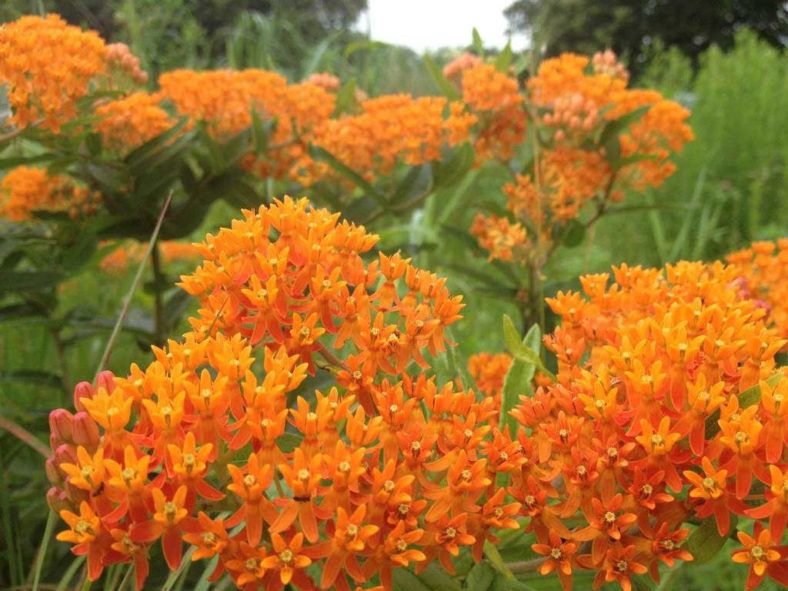Scientific Name
Asclepias tuberosa L.
Common Name(s)
Butterfly Weed, Pleurisy Root
Synonym(s)
Asclepias tuberosa var. tuberosa, Acerates decumbens, Asclepias elliptica, Asclepias lutea, Asclepias revoluta
Scientific Classification
Family: Apocynaceae
Subfamily: Asclepiadoideae
Tribe: Asclepiadeae
Subtribe: Asclepiadinae
Genus: Asclepias
Origin
Asclepias tuberosa is native to eastern North America.
Flower
Color: Orange or yellow
Bloom Time: Early summer to early fall
Description
Asclepias tuberosa is a perennial plant with clustered orange or yellow flowers from early summer to early fall. It grows up to 3.3 feet (1 m) tall. Leaves are lanceolate, up to 5 inches (12.5 cm) long, up to 1.2 inches (3 cm) wide, and spirally arranged.

Hardiness
USDA hardiness zone 4a to 10b: from −30 °F (−34.4 °C) to 40 °F (+4.4 °C).
How to Grow and Care
You can easily grow Milkweeds to attract the Monarch and other flying creatures to your garden. Plant seeds of the Milkweed Plant indoors or direct sow outside after the danger of frost has passed and the soil has warmed. If the appearance of the plant is too weedy for your taste, grow Milkweeds in a hidden but sunny corner or at the back of a border.
Milkweed often does not begin growing in northern gardens in time to be fully beneficial to butterflies. There you can start seeds of Milkweed inside so they will be ready to plant when the soil has warmed.
Milkweed plants benefit from vernalization, a cold treatment process, before sprouting. They get this when planted outside but treat the seeds through stratification to speed up the growing process. Place seeds into a container of moist soil, cover with a plastic bag and refrigerate for at least three weeks. If desired, plant into containers and place under a grow light inside about six weeks before soil temperatures outside have warmed. Keep the soil moist by misting, but seeds can rot if allowed to sit in soggy soil.
See more at How to Grow and Care for Milkweed Plants.
Links
- Back to genus Asclepias
- Plantpedia: Browse flowering plants by Scientific Name, Common Name, Genus, Family, USDA Hardiness Zone, or Origin
Photo Gallery
Click on a photo to see a larger version.




